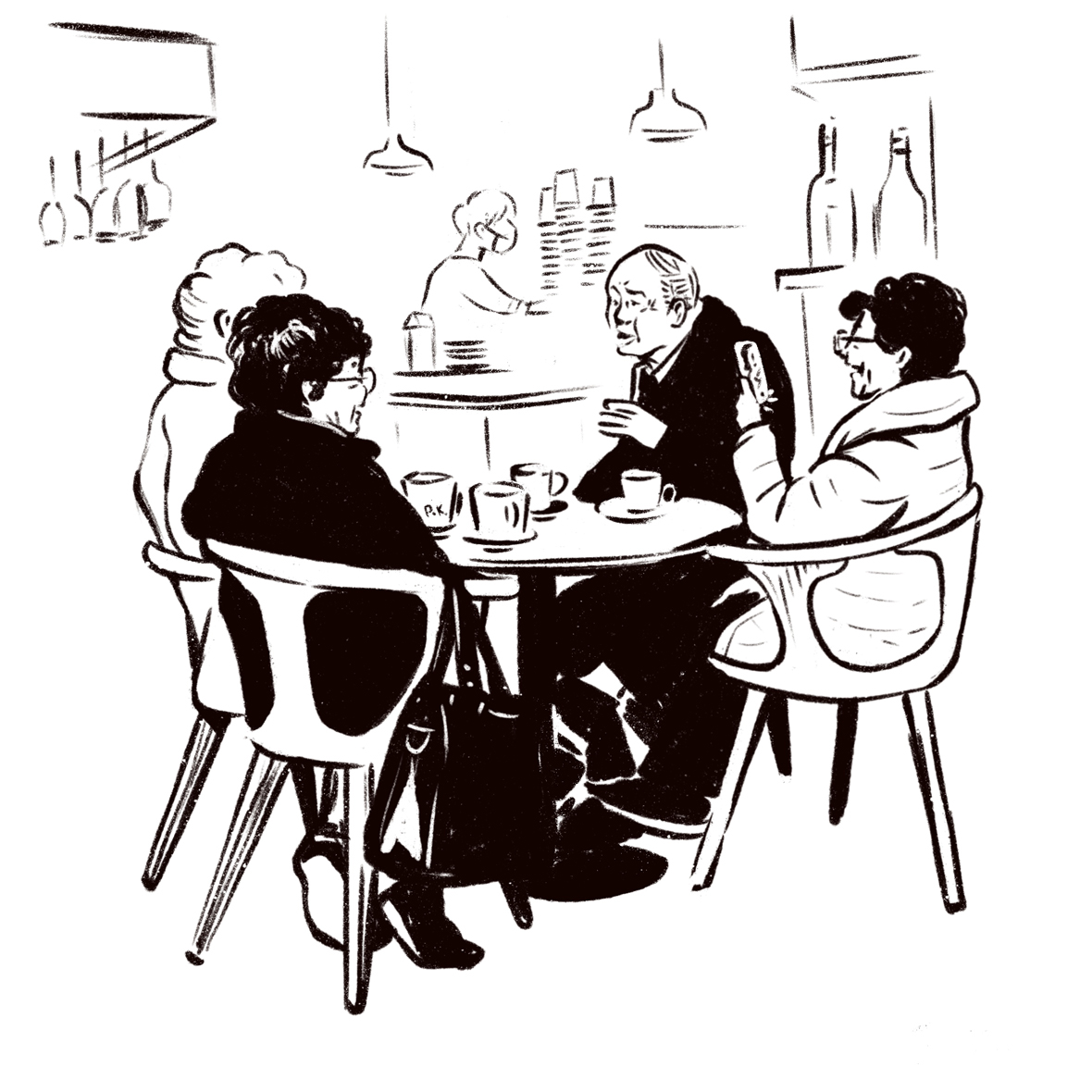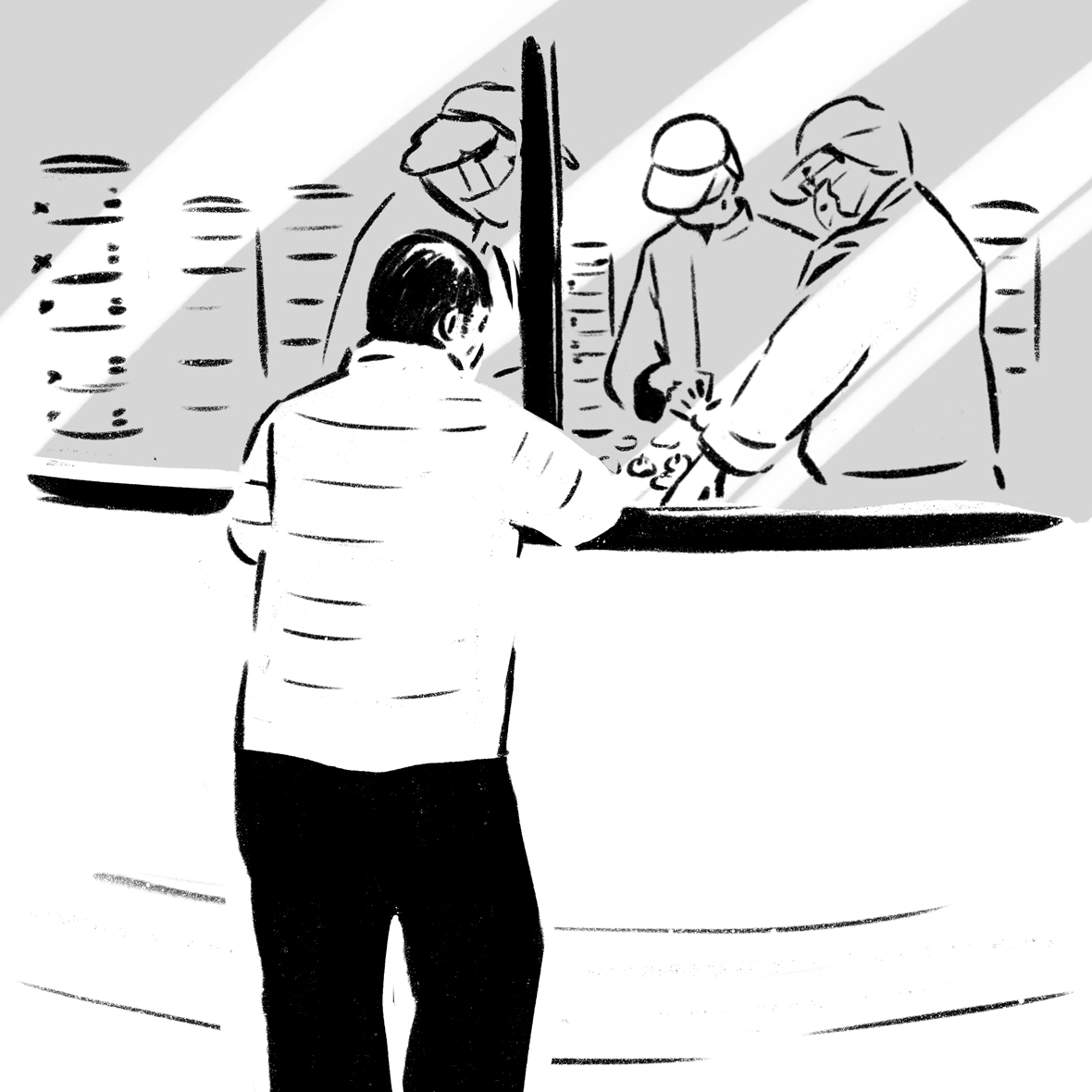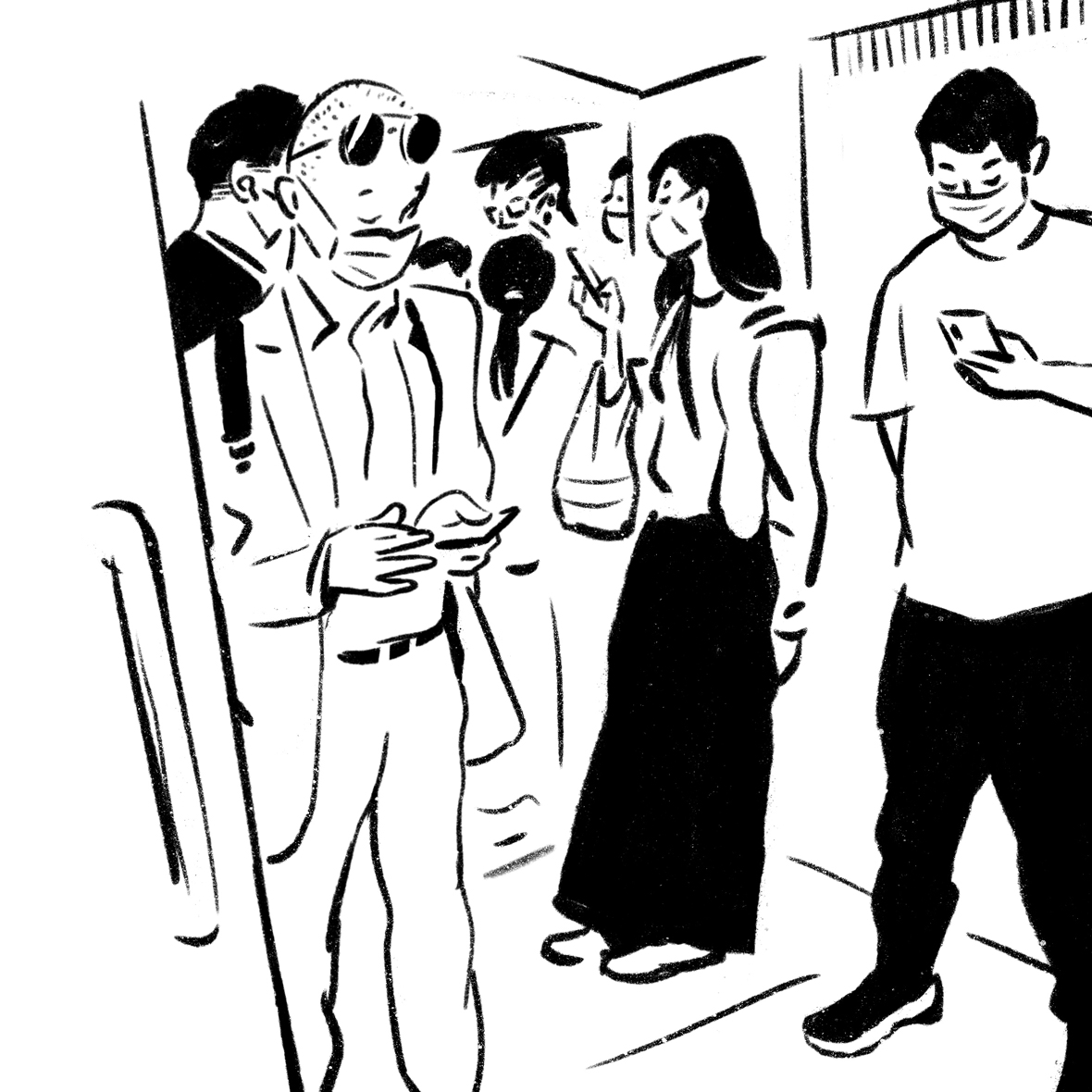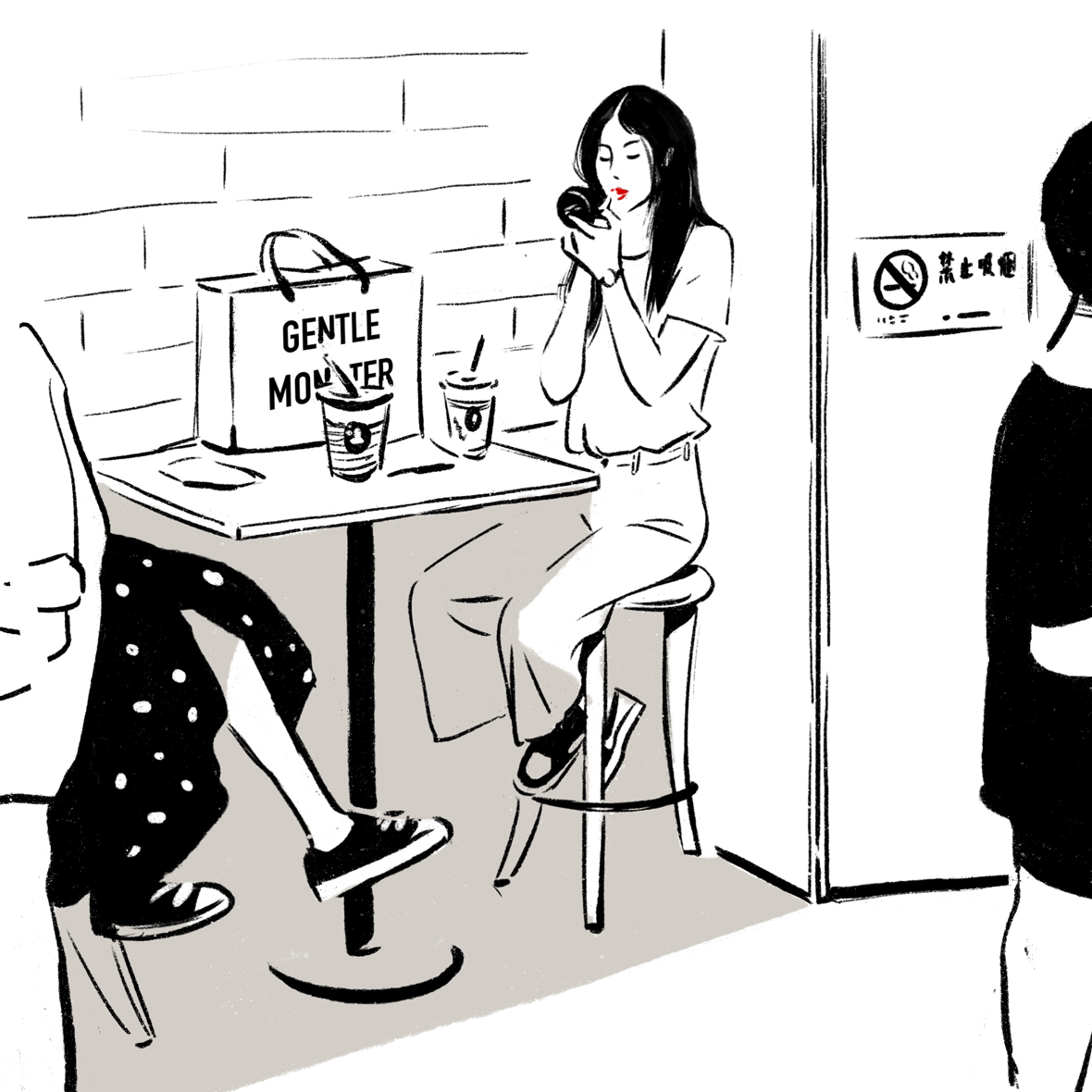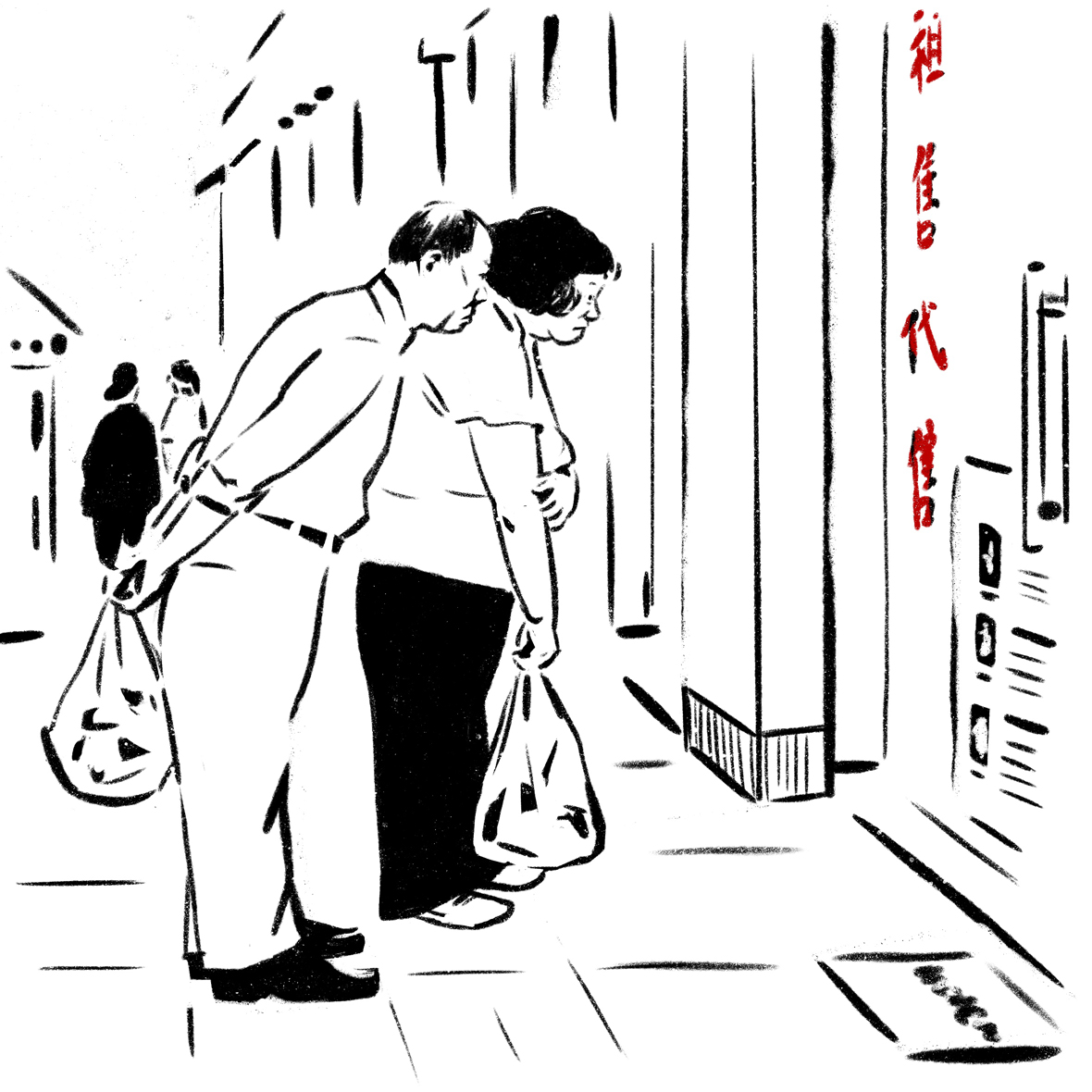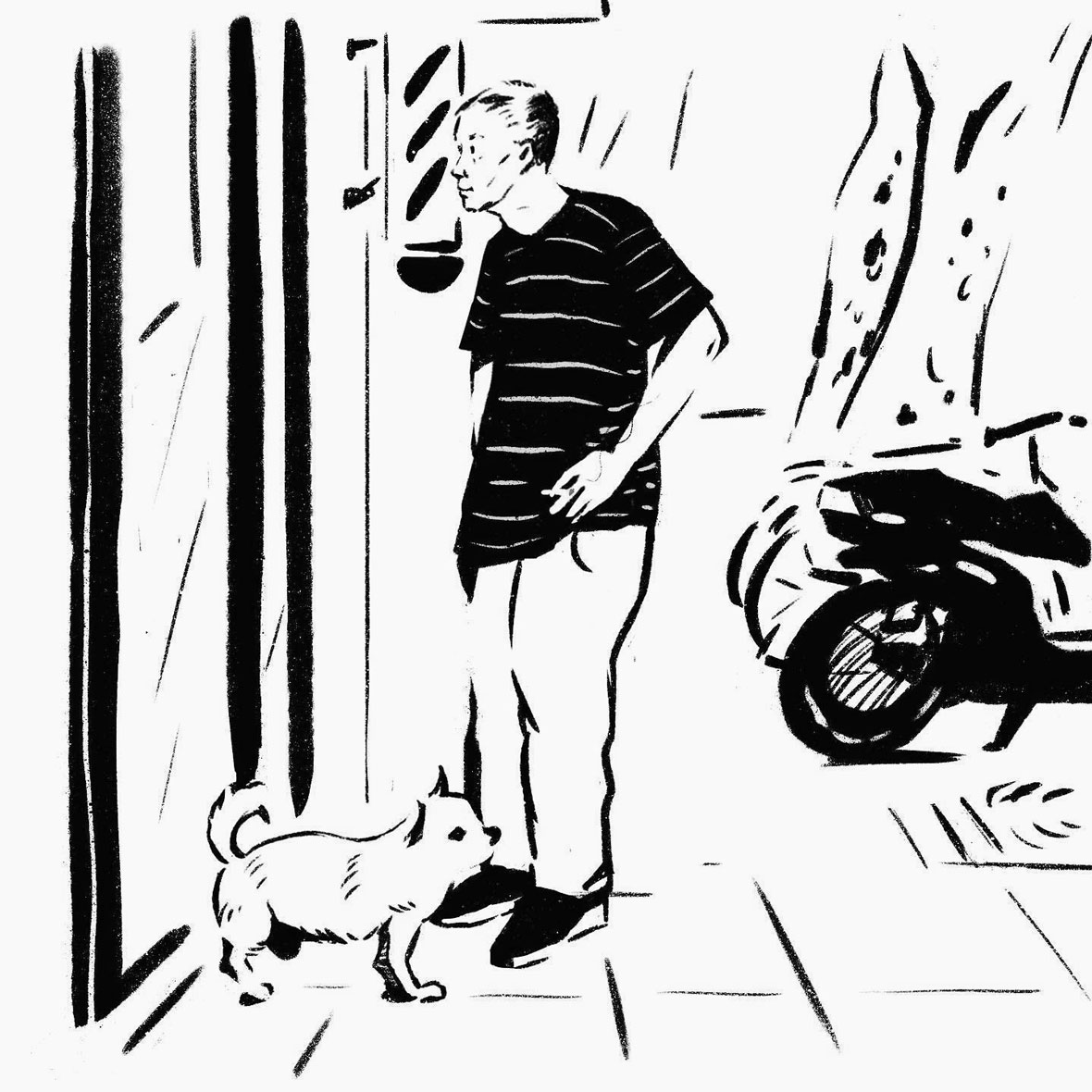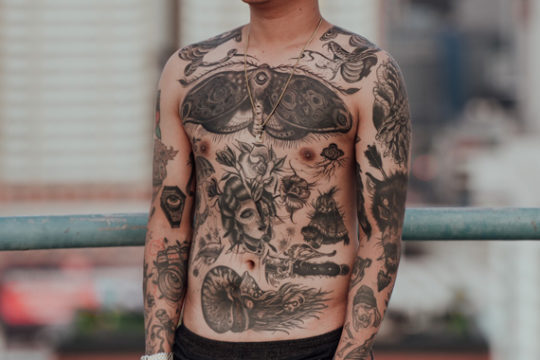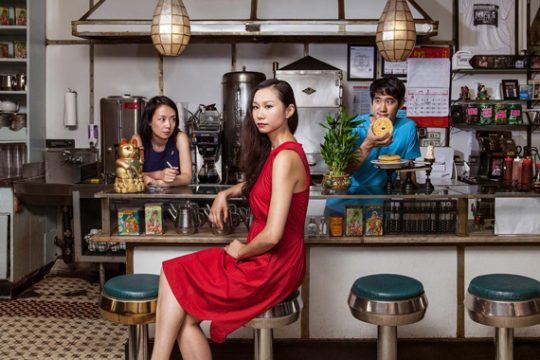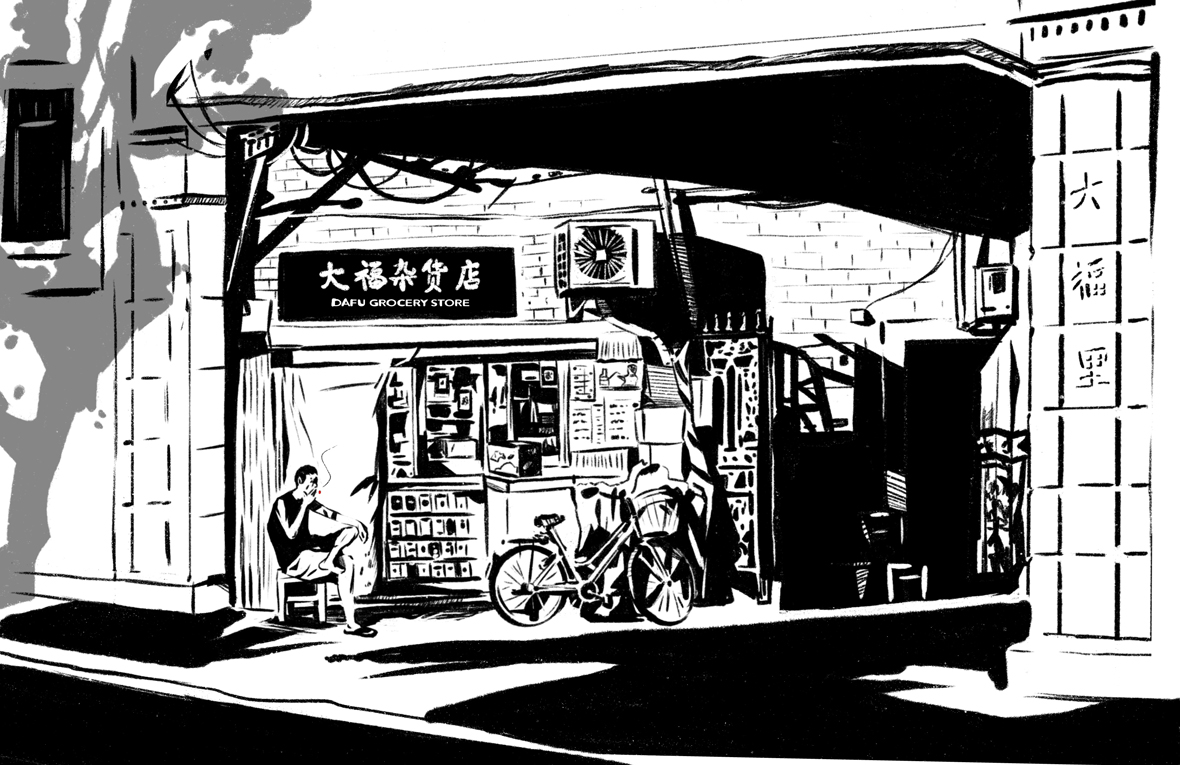
The work of illustrator Peng Kai peels back the contemporary sheen that many associate with modern-day Shanghai, focusing instead on the seemingly bygone parts of the city. Gazing at his art, viewers are instantly transported to simpler times—sights such as the mom-and-pops convenience shops hidden within the city’s alleyways, plaza dancing routines in Xiangyang park, and hole-in-the-wall baozi restaurant are given the spotlight. Though these types of places and activities are still around, they’ve become less relevant than days’ past, and they’re typically out of mind for younger generations.
“Nowadays, the younger kids in Chinese cities are mostly the same,” Peng says, explaining why the characters who appear most frequently in his art are older individuals. “I’m not purposely focusing on the older generation, but their lives encapsulate the city’s spirit in a much more faithful way.”
At its core, Peng’s work is a celebration of Shanghai’s distinctive essence, and in light of the recent lockdowns, the mundane moments that he spotlights seem to take on new contexts. They’ve become a reminder of how precious ordinary life can be, and how only when the mundanity we take for granted is gone, do we realize its beauty.
与印象中这座现代化都市相比,彭凯(PK)笔下的上海则是一副“老龄化”的样子—— 弄堂里的杂货店、襄阳公园里的交际舞、社区健身器材上挥舞拳臂的大妈、老城厢街边的小笼包铺……这些看似“老去”的城市光影,却簇成上海的烟火和人情,在车水马龙的缝隙里调味。他说道:“现在中国各大城市的年轻人其实没有太大的差异,我并没有特意去挑选老年人来画,只是从他们样貌你可以感受到上海。”
2022 年春天,上海与新冠奥密克戎病毒的僵持让整座城陷入泥潭,对于彭凯来说,上海味道暂存在这一幅幅插画里,让他回想起平日上海的滋味;对于观众而言,这些虽是上海人的普通日常,却在当下这个隔绝期令人心生向往,因为平凡即珍贵。
Peng was born and raised in Shanghai, and his enduring love for the city can be traced back to his childhood years. “When I was a kid, I lived in a four-story lane house,” he recalls. “My grandmother lived in a lane house near Ruijing Road, where there were rows of shikumen dotting the block. Every holiday, my cousins and I roamed through those back alleys and made it our playground. I have fond memories of my time there—even my memories of thinking that the shikumen’s restrooms were haunted and being afraid to go in I look back on fondly.”
The places that Peng experienced during this time are the source of much nostalgia today, and they form his impression of the city. Take for example, a two-story restaurant called Luxing that he often passed by. It’s sights, sounds, and even smells are vivid to this today. “I remember how brightly lit it was even at nine at night,” Peng says. “The steam that poured out from the storefront, the silhouettes of customers inside, and the lively energy.”
彭凯对于上海的专情并非无迹可寻。作为土生土长的上海人,他对童年时期的生活经历还记忆犹新。“我小时候住的是四层公房,奶奶和外婆家仍住在石库门。奶奶家靠近瑞金路一带,那里有一排排石库门建筑。每逢假期,我和表哥表姐就在奶奶的石库门院子的天井下玩耍,一起在阁楼上写作业,印象中,石库门的厕所一直不敢进去,总担心闹鬼,” 他笑着说道。而曾经每次去外婆家时路过的街景,成了他对这座城市最怀念的场景,他接着说:“总会路过那家名叫‘鲁兴’的二层楼饮食店,晚上八九点仍旧灯火通明,店里飘出的白色蒸汽,食客在里面若影若现,十分热闹。”这些童年的记忆,串联起彭凯对家乡上海的初印象,潜移默化地编织着他对于上海的情结。长大后,他走上街头,用画笔捕捉上海的人情。

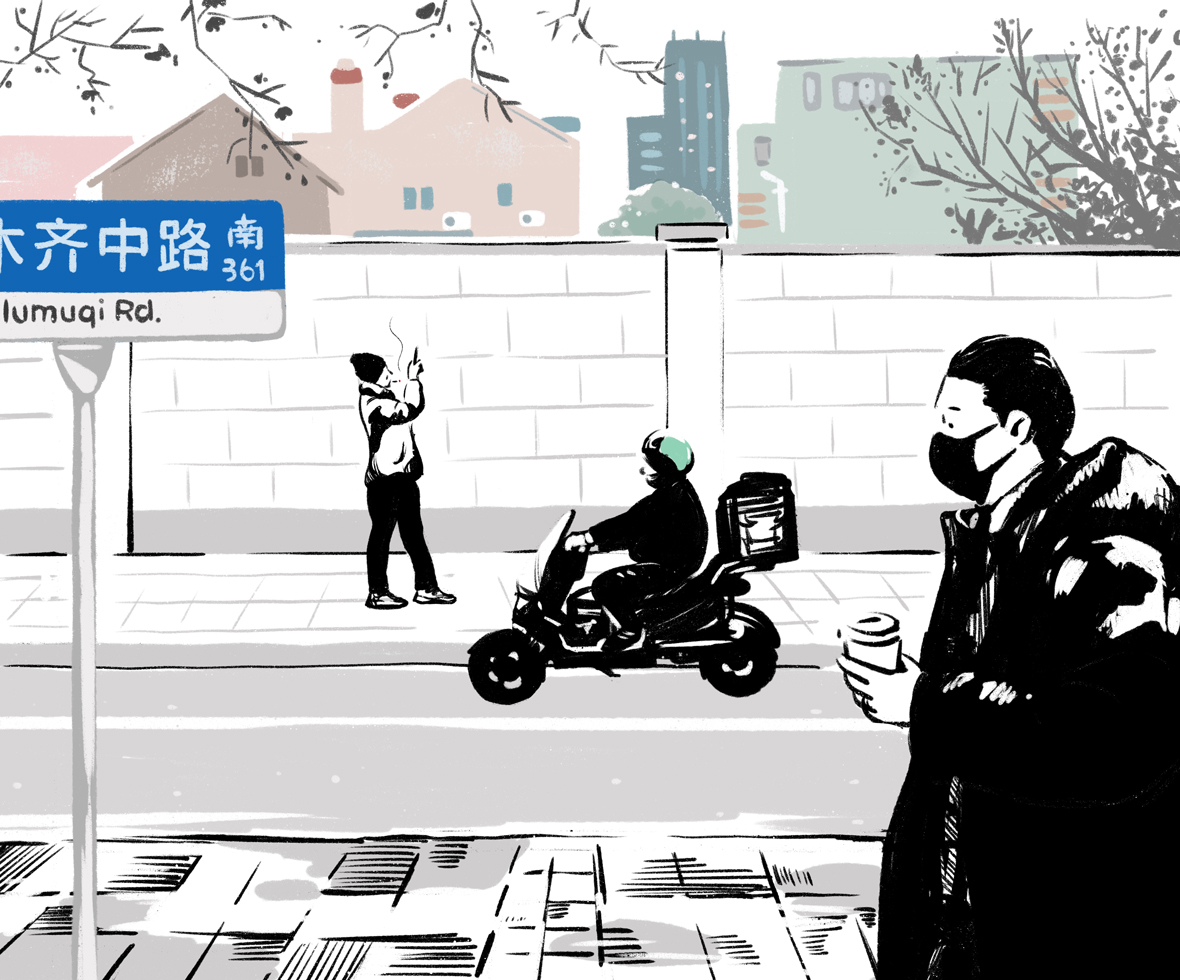
In 2016, Peng discovered American illustrator Jason Polan’s Every Person in New York series, and he was inspired to recreate the project for his hometown. Every Person in Shanghai is similarly pared down, depicting the city’s people and its locales in either completely black-and-white or with minimal colors. Despite the simplicity, his illustrations are vivid portraits of life in the city.
Being observant is a habit that’s stuck with Peng since his younger years, and he believes it’s essential to his work. “As an illustrator, the ability to observe and replicate my observations with my art has become instinctive,” he says. “I think people nowadays are less observant, too distracted by their phones to the point where they can’t even glance away from it while walking down the street. Since everyone lives vicariously through their phone screens, I thought my illustrations can help remind people of the beauty you miss when you never look up.”
或许是从小喜欢画画的缘故,彭凯对于身边的观察细致入微。2016 年,受到美国艺术家 Jason Polan 的《Every Person in New York》的影响,彭凯开始创作自己的系列《Every Person in Shanghai》(人人上海)。其中大部分作品虽都以黑白色线条呈现,却能把日常生动描绘,从不同人物的体态、神情、动作还有身旁的事物、街景,将观众轻松地带入生活的情景,生活中的“过客”重新浮现在脑海。他说:“作为插画师,观察和模仿能力变成了本能。我觉得现在的人观察力变弱了,走在街上也在看手机。我想既然大家都生活在屏幕上,我就把自己的插画发在朋友圈里,让你在手机里看到你错过的风景。” 通常,他没有刻意选择某个场景进行创作,而是靠平日生活中的发现与留心。老弄堂、地铁、公园或是老城厢,彭凯的创作源泉在城市中无处不在。
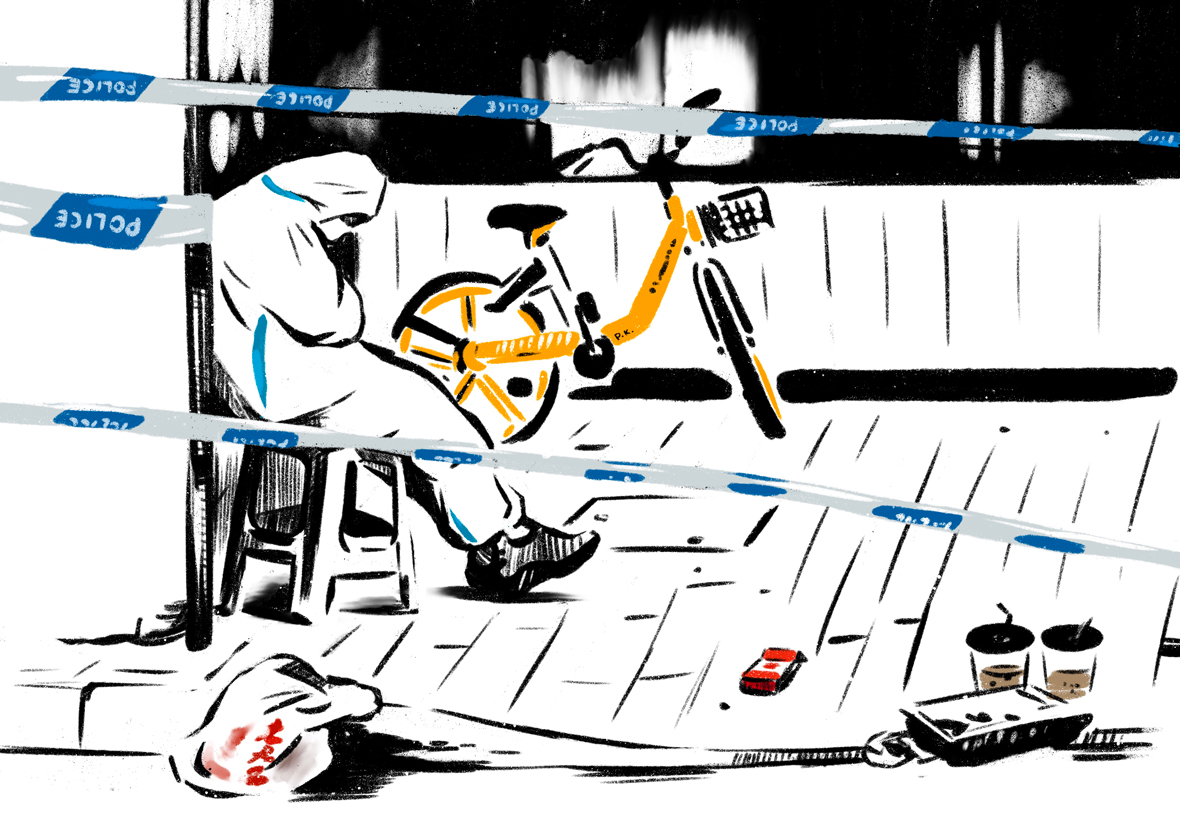

With Shanghai’s frenzied pace of development, the old ways of life have been cast out of sight, blotted out by the city’s skyward expansion. The southern districts of the city and Luwan district, areas that Peng are most familiar with, have largely changed over the years—though remnants of the city’s old essence still linger. As Shanghai continues to change and grow, Peng understands that the sense of community and human warmth he associates with the city will inevitably fade further away. However, he isn’t looking to his art as a way of waging battle against modernization—he simply wants to document the city and celebrate the little slices of Shanghai that remain blissfuly oblivious to the megalopolis’ unrelenting expansion. “I believe that people in Shanghai are very receptive to change,” he notes. “Even the older generations are willing to accept change, and they still remain curious to new things. They’re not shocked by modernization—they’re simply slowly digesting it.”
随着城市现代化发展的进程,许多上海老式的生活习惯随着老城厢的改造隐退在大众视线之外。据彭凯所说,他熟悉的南市区(曾经上海市辖区,包括老城厢及陆家浜、浦东上南地区等地区,2000 年后并入黄埔区)和卢湾区以前都还保留着浓浓的上海味道,但随着拆迁、旧区改造,很多老一辈的人都搬走了,人情味、烟火气正在逐渐消失。不过,彭凯并不希望用作品来对抗现代化,他只想做个生活简单的观察者,以此来致敬时代夹缝中能保持乐观的人。他紧接着说道:“我觉得上海是一个接纳度很高的城市,就算是老年人也愿意接受新事物,对新的东西保持好奇心,现代化对与他们来说不是一种‘冲击’,而是逐渐被‘消化’的过程。”
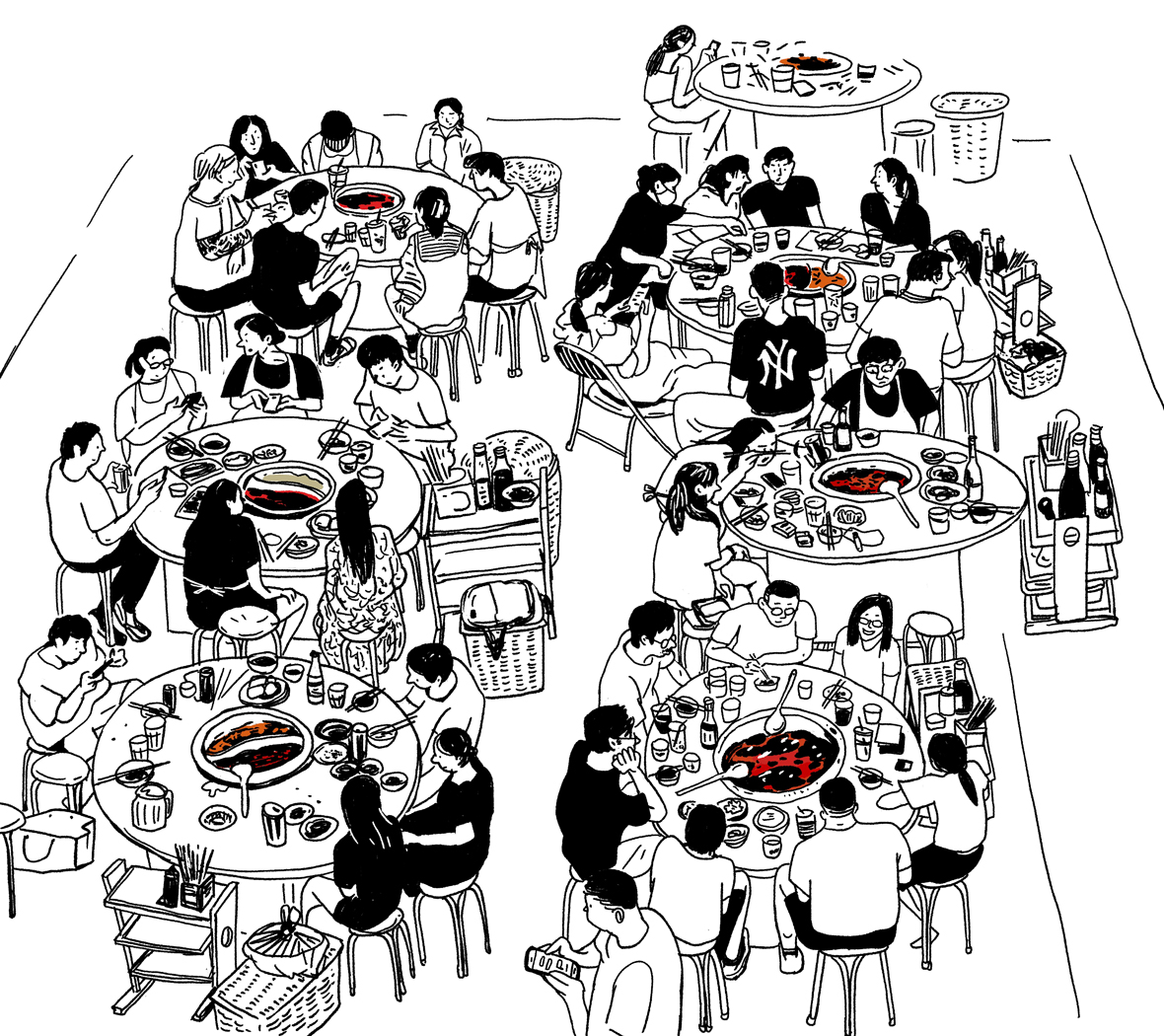
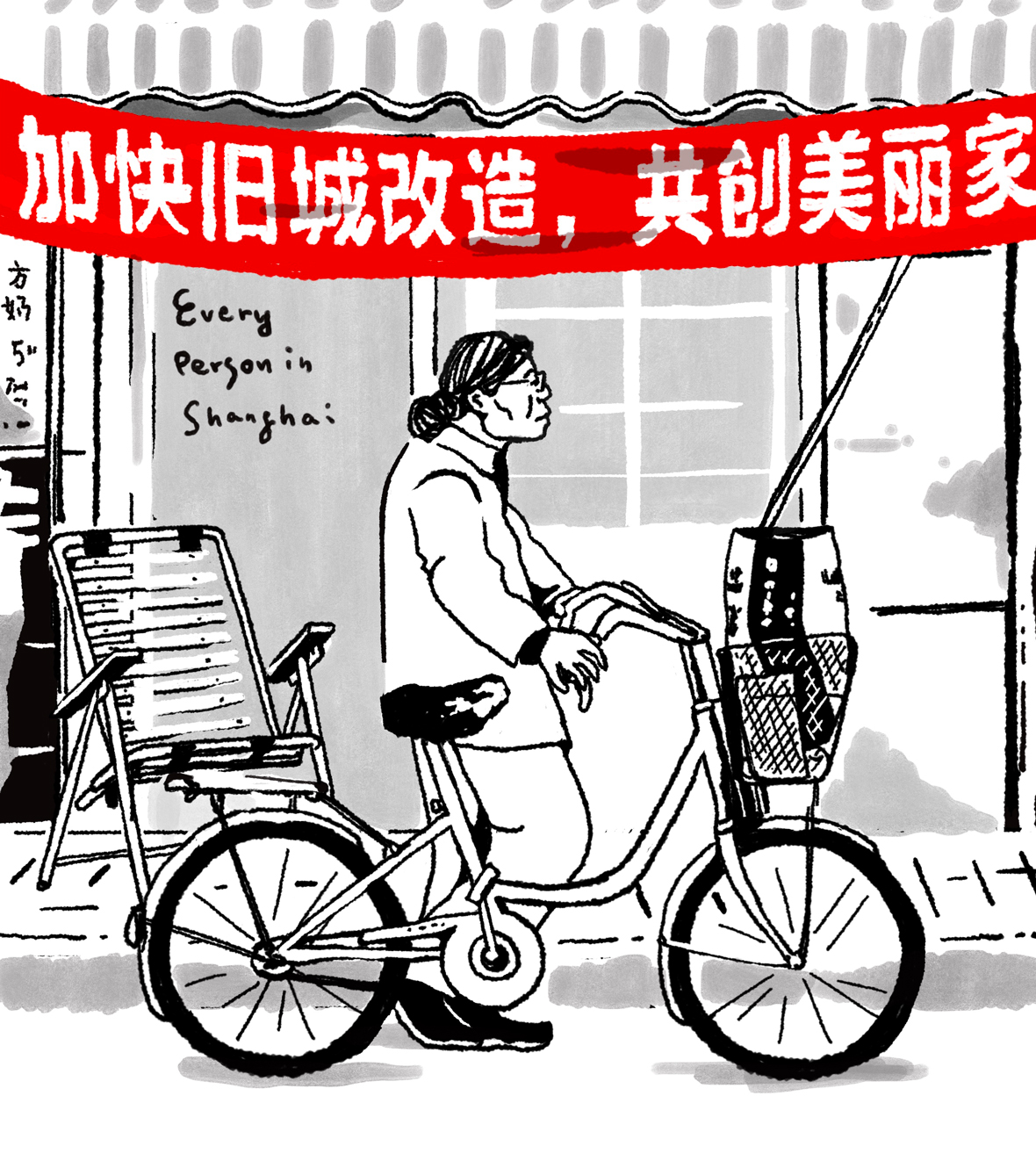
Peng is now a freelance designer and artist, and whenever he has time, he works on the series. His tribute project to Shanghai now consists of over 50 illustrations and continues to grow. He shares that he doesn’t have any concrete plans about where he wants the series to end up but simply hopes to continue sharing his love of the city through his work. Art has been a faithful companion during the lockdown, and with each completed piece, Peng has found comfort in knowing that there’s plenty more ordinary days to look forward to in the place he calls home.
创作上的没有野心,反倒让他的作品看起来真实、且发自内心。现在,彭凯辞去了工作,每日除了视觉设计的工作,便是插画创作,截至目前,《Every Person in Shanghai》已完成了近五十幅作品。疫情当下,他也没有特别的孤独感,因为他对上海抱有信心,相信这黑暗时刻很快会过去,自己便能重新回到关于这座城市和人的“平凡”创作中来。他说:“我希望在《Every Person in Shanghai》系列积累到一百幅满意作品的时候能做成一本书,我给自己的唯一要求,就是要有趣,能给大家带来共鸣。”

